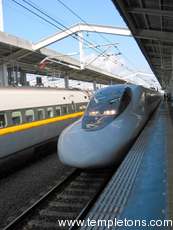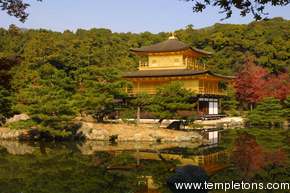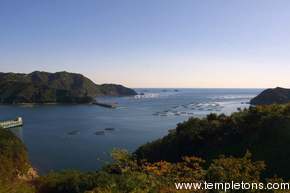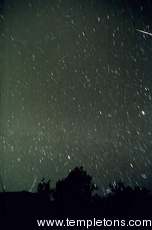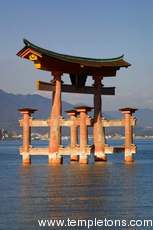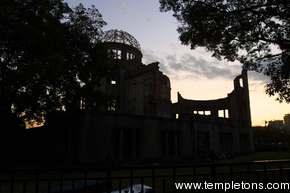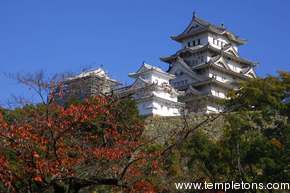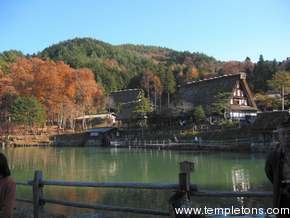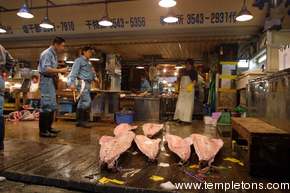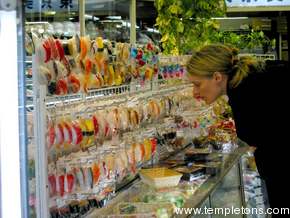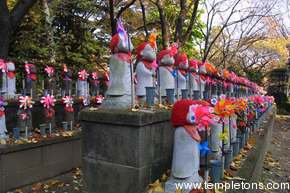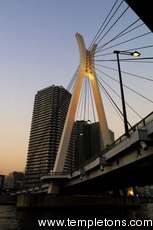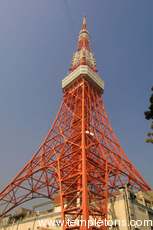Lost in JapanLost in Japan
I call this tour "Lost in Japan" because if you go to Japan you will
get lost. It's virtually assured. They warn you about it but you
still will get lost. I felt bad about it until I learned that the
locals also get lost. It's not that you can't read the names of
the streets, it's that often they don't have names. Addresses
work instead by neighbourhoods, blocks and buildings, which are numbered
in the order they were built.
In spite of this, you will have a great time in Japan, if you just
allocate a little time to spend being lost. Being lost can be an
adventure, and adventure is why you travel anyway. You will never
be truly lost, for there will always be Japanese who will take extreme
steps to get you going again.
Our tour of Japan was inspired by a desire to go to Asia to see the 2001
Leonids Meteor Storm. Various predictions said Asia would have the best
show (with 2 big storms compared to one lesser one in North America) though
all would far exceed an ordinary Meteor Shower. In particular, Japan
would have the best Asian view, short of Guam and other pacific islands
with scary weather prospects. To top it off, Sept 11 had caused airfares to
be cut to the bone, though unfortunately not local hotel prices in Japan.
While the once in a lifetime Meteor Storm was the instigator, touring Japan
was also a great time. We started in Kyoto, the ancient capital, moved
to Nara, the ancient-ancient capital, then into the countryside of the
Mie prefecture for the meteors. From there we explored western Honshu and
Hiroshima, went back east to go up into the mountains to the village of
Takayama, and finished up in bustling Tokyo.
You will also want to see the
Japan Panorama Page
for really-wide panoramas of Japanese scenes.
Here are the pictures and stories, and below you will find even more.
Go visit Japan while the flights are still cheap. You get a first
world country with all the amenities, service and safety but a
truly different culture to explore.
You will need to learn some Japanese, and you should anyway. At least
enough to know how to make reservations at Ryokan and restaurants, and
to order food. The Japanese food in Japan is, surprise, much better than
that in the USA, even California. I'm not a big fan of Japanese food, mostly
because I'm not too fond of random fish parts and flavours showing up
in my cuisine, but inside Japan just about everything was wonderful.
(Though the squid sushi is not recommended.)
Try to stay in Ryokan, the Japanese style inns, at least part of the time.
They can be quite cheap, if you are on a budget, though small. I suggest
you make your first reservation in a western style hotel, then try out
a Ryokan to see if you like it, and if you do, stay in Ryokan for the
rest of your stay. You may miss a bed off the floor a bit, but you're
not traveling to have everything the same as home.
Most Ryokan have western style bathrooms now anyway, as many Japanese have
come to want them, and even a small hidden alcove with chairs and a table.
Japanese TV is a hoot, even if you don't understand it. The ads are
amusing, as is the Japlish. Japlish is the funny English the Japanese
use. They can read and know the meaning of many English words, but don't
know a lot about grammar, idioms or what words mean together. That's why
they can name a popular drink Pocari Sweat. Japanese have nothing but
English on their T-shirts and on about half the commercial signs.
You'll even see familiar things like "Who Wants to be a Millionaire." The
host looks exactly like Regis (who looks just like the British host.)
and western shows with added Japanese commentary. Alas, Iron Chef is no
longer on the air. The other game shows are bizarre and entertaining.
There are tons of new brands of snacks, chocolate and especially drinks
from the vending machines to try. Do you like it when a new brand
comes out? You'll have a field day.
For nerds (and that seems to include most of the Japanese) Akihabra is
a must. Football fields of electronics stores, many with new stuff
that's not out in the USA yet or ever. And a Japanese hi-tech toilet if
you want one. (The combine a bidet at rear-end cleanser with a toilet
seat.)
It's also nice to see a real working train system, with trains coming
every few minutes, and always on time. The Shinkansen is expensive but
tourists can buy the rail pass to get unlimited rides. We bought the
2 week pass which was expensive ($350) and probably overkill. A one
week pass and staying still at the start and end would have been the
best plan. They never check the inside of your pass if you are not
getting reserved seats, but in Japan nobody else cheats so you won't
want to either. It will be a shame when that innocence is lost -- it is
said bike theft is on the rise.
The phrase-books need to include some highly useful phrases, such as:
- What the hell is that thing on my plate?
- Will this kill me if I eat it?
- Can I get food without suckers on it?
- No need to wrap that! (Everything you buy, including a roll of bread,
will be wrapped in not one, not two but three layers.)
- No need to take me there, just point me on the way and I'll get
somebody there to guide me when I get there.
- What do you mean the same room costs twice as much with two people in it?
Other Useful Tips
Try some non-Japanese food made by the Japanese if you have time.
But don't bother with the ubiquitous McDonardu. We went in and tried
a Terriyaki McBurger to see if it was much different. It wasn't.
The Japanese have come to love curry, and I had it a few times as a
travel fast food, but it's not particularly remarkable.
Even the locals get lost. Our cab driver circled for 20 minutes trying
to find a restaurant (running up the fare) and consulting maps in
local convenience stores. There are lots of convenience stores.
We met with another meteor watcher who lives in Tokyo and went out to
lunch. He took 2 hours and wandered from neighbourhood to neighbourhood
in our quest for a restaurant familiar to him.
There are lots of local specialties, and in spite of the small size of
the country, you may not find them everywhere, so try them where you
see them.
Cameras
The cameras for this trip were the Canon EOS D30 digital camera,
with my 17-35 f/2.8 Sigma Lens, 24-85 Canon lens, 50mm f/1.8 Canon lens and
70-200 f/4 Canon lens. My film body shot most of the meteor shots
with the 17mm zoom.
(The D30 is long replaced with a D60 and now a 20D.)
Shots were also taken with a new Canon S40 4 megapixel extra-compact
camera, for when I didn't want to carry the whole lens bag around.
I got this camera for this trip, and when I got to Japan found it was
cheaper there, in spite of being told this would not happen. The camera
takes very good pictures but is slow, at ISO 50, and f/4.5 at the long
end. It sure is compact though, which is why I got it.
Some shots were taken by Kathryn with the S40. The S40 was stolen and
is now replaced with a G5.
